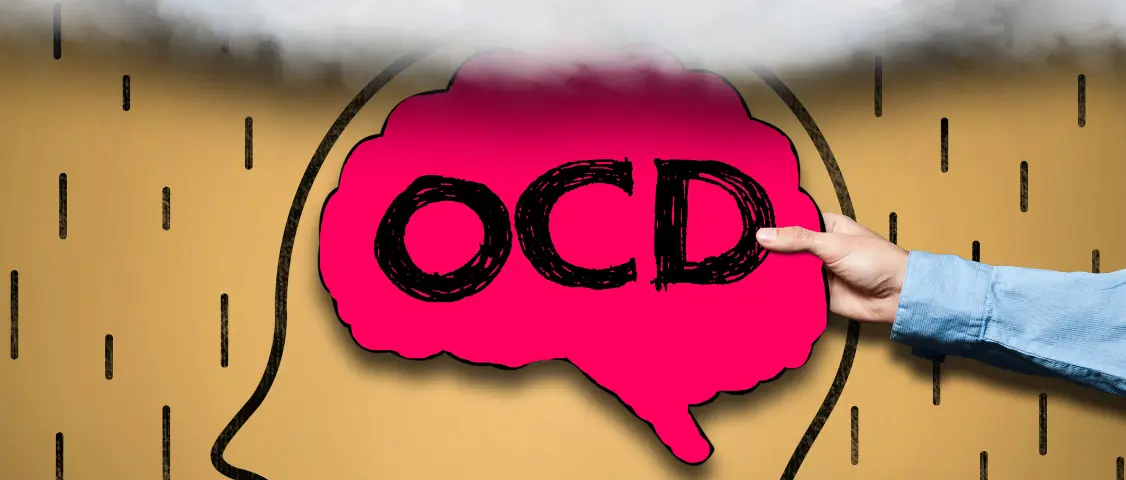Understanding mental health conditions is key to getting the right support, but with complex disorders like obsessive-compulsive disorder (OCD), pinpointing specific symptoms and ways to cope with them can be challenging. For instance, individuals who compulsively clean may need slightly different support or respond differently to treatment than those who compulsively check or order. Understanding these symptom clusters can help individuals find the proper support and make meaningful changes.
OCD is a complex and heterogeneous condition, meaning it has several etiologies or root causes. These etiologies indicate specific symptom clusters related to OCD that share common themes and respond uniquely to treatment. Despite these clusters not being a formal part of the diagnosis, recognizing these subtypes can still offer valuable insight into one’s experiences with OCD and help individuals seek specialized support.
Additionally, there are several associated conditions which sometimes appear along with OCD symptoms. These include body dysmorphic disorder and hoarding disorder, each of which overlaps with OCD but affects daily life differently. Understanding the nuances of this class of disorders not only helps individuals better understand their mental health but also allows a direct path to targeted treatment, ensuring better outcomes in OCD treatment.
Understanding Obsessive Compulsive Disorder
Obsessive-compulsive disorder is a mental health condition that includes the presence of obsessions and compulsions that significantly affect quality of life. Obsessions are persistent, intrusive thoughts, images, or urges that trigger significant anxiety and are disproportionate to the real-life risk. In response, compulsions are rituals or repetitive behaviors meant to manage or neutralize the anxiety caused by their obsessions. For instance, a person obsessed with germs may spend hours compulsively washing their hands to alleviate fear of contamination, even though they recognize this response is excessive.
Although many people use the term “OCD” loosely to describe strict habits or rituals, clinical OCD is very specific. Clinical OCD represents the presence of compulsions that take more than one hour per day, are responses to persistent anxiety.Symptom Clusters of OCD.
The DSM-5, the diagnostic manual used by mental health professionals for diagnosis and treatment, outlines specific criteria for diagnosing OCD, as described above. These criteria help ensure that OCD is accurately recognized and treated based on our current understanding of research and clinical expertise. In terms of types of OCD, the DSM-5 recognizes just OCD and OCD-related conditions, such as hoarding disorder or body dysmorphic disorder. In clinical terms, there are currently no recognized subtypes.
However, many people experience OCD in patterns referred to as “symptom clusters.” For example, individuals with “contamination OCD” may have obsessions related to germs and cleanliness paired with compulsive behaviors like excessive hand washing or cleaning rituals. These clusters provide a framework to help individuals understand their symptoms and seek targeted support but are by no means final. OCD is highly individual, and many will not fit neatly into these categories or may experience more than one symptom-cluster of OCD. Defining these categories aims to understand and clarify them and not to replace professional diagnoses.
Contamination OCD
Contamination OCD refers to an intense fear of being contaminated, contaminating others, or spreading germs. Individuals experience ongoing anxiety about dirt, germs, or illness that leads to compulsive behaviors aimed at reducing perceived contamination risks, including excessive cleaning, disinfecting, handwashing, or requiring protective clothing to create a barrier from germs.
While most people are concerned with cleanliness to an extent, contamination OCD involves persistent, disproportionate anxiety that leads to hours each day cleaning, showering, or taking preventative measures.
Common Obsessions
- Fear of germs, dirt, or infection
- Fear of spreading illness
- Fear of bodily fluids and waste
- Fear of environmental contaminants (e.g., lead, asbestos)
Common Compulsions
- Excessive handwashing or showering
- Repetitive cleaning and disinfecting objects or surfaces
- Excessive use of hand sanitizer
- Rigid rules about wearing protective clothing
Ordering OCD
Ordering or symmetry OCD is characterized by obsessions with orderliness, symmetry, sameness, or perceivably perfect arrangement of objects. These obsessions often arise from beliefs that something negative will happen if things aren’t ordered accordingly, and compulsions aim to reduce this fear by arranging things or controlling aspects of one’s environment in an effort to bring stability and comfort.
Ordering OCD is not the same as perfectionism, or generally wanting things to be in order, and is distinguished by its persistent and time-consuming nature that leads to delays in or prevents other activities.
Common Obsessions
- Fear of disorder leading to chaos or adverse events
- An urge or need for visual perfection and balance
- An urge to arrange and order objects
Common Compulsions
- Lining up or arranging items in a specific way
- Organizing items by color, size, or number
- Always counting while doing other activities
- Repeating actions equally on both sides of the body
Harm OCD
Harm OCD refers to intrusive thoughts or fears about causing harm to oneself or others despite having no desire or intention to act on these thoughts. Because these thoughts are typically ego-dystonic –or out of place with our beliefs– they cause enormous distress and can lead to questioning one’s intentions and morality.
These obsessions primarily arise from a place of harm avoidance. In experiencing intrusive thoughts about causing harm, individuals compulsively avoid others, seek reassurance, ritualistically confess, or ruminate on past events to ensure they didn’t accidentally hurt someone.
This type of OCD is often misunderstood because the obsessions indicate an obsession with harm, but compulsions seek to prevent harm. The presence of these intrusive thoughts does not indicate a risk of actually causing harm when they are ego-dystonic, and are incredibly distressing because they do not align with one’s core values and beliefs.
Common Obsessions
- Fear of losing control and hurting others accidentally
- Fear of acting out impulsively and violently
- Concerns about unconsciously harming others
- Fear of suicide
Common Compulsions
- Seeking reassurance that one hasn’t harmed others
- Excessively reviewing past events to ensure no harm was done
- Consytantly checking oneself for signs of danger
- Avoiding triggering situations or dangerous objects
Taboo and Intrusive Thoughts
Intrusive thoughts are a core component of clinical OCD, but in some cases, they are considered a subtype when they center around unwanted ideas related to sexuality, religion, morality, or taboo subjects. Individuals experience distressing thoughts that are contrary to their core values, leading to feelings of guilt, shame, or fear that they compulsively dwell on or repetitively work to safeguard against.
Because these thoughts do not necessarily reflect an individual’s true beliefs or values, they feel intrusive and distressing. Compulsions typically revolve around mental rituals, such as repeatedly analyzing thoughts or seeking reassurance from others. Although these compulsions temporarily relieve anxiety, they can ultimately reinforce the obsessions, making it harder to break the cycle of intrusive thoughts and compulsive behaviors.
Obsessive-Compulsive Related Disorders
While the DSM-5 doesn’t categorize OCD into specific subtypes, it does recognize several conditions as OCD-related disorders. These conditions share the core aspects of OCD–unwanted thoughts or repetitive compulsions–but they uniquely impact an individual’s quality of life, are typically body-related, and may not include both obsessions and compulsions. Although these disorders overlap with OCD, they require different treatment protocols, and the purpose of defining them separately from OCD is to ensure accurate diagnosis and positive long-term treatment outcomes for individuals affected.
- Body Dysmorphic Disorder: Obsessive preoccupation with perceived flaws in physical appearance with compulsions related to consistently checking one’s body and seeking reassurance about the state of their appearance.
- Hoarding Disorder: The combination of reluctance to relinquish owned items and the need to acquire new items in a way that impacts the quality of living spaces, safety of living spaces, and avoidance behaviors.
- Excoriation (Skin-Picking Disorder): Obsessive skin-picking which can lead to lesions or scars, despite consistent efforts to stop. While it shares similarities with OCD, obsessions don’t always precede excoriation; it may be preceded unconsciously to manage triggers that induce anxiety in general.
- Trichotillomania Disorders (Hair-Pulling Disorder): Similar to excoriation, but involves pulling hair in response to triggers, which leads to hair loss and is not always preceded by obsessive thoughts.
How to Recognize and Seek Help for OCD
While it takes many forms, OCD involves the presence of obsessive thoughts and repetitive behaviors that lead to decreased quality of life and a significant loss of time. While many of the subtler aspects of OCD behaviors are common anxieties or fears that everyone manages on a day-to-day basis, the presence of clinical OCD consumes and disrupts all aspects of life. When OCD symptoms lower quality of life and take up more than an hour of your day, you should consider support.
Treatment approaches like exposure and response therapy work by breaking the connection between obsessions and compulsions, working on reducing sensitivity to thoughts rather than eliminating them, helping to break the cycle rather than reinforce it. Treatment, which most often includes cognitive behavioral therapy (CBT), exposure and response therapy (ERP), or medication management, aims at improving quality of life and reducing anxiety associated with OCD by helping individuals manage the anxiety caused by obsessions without resorting to compulsions, eventually leading to a reduction in both the frequency and intensity of obsessive thoughts.
The goal of therapy is not to get rid of or suppress compulsions, and in practice, this can lead to furthering the cycle. Therapy primarily teaches individuals to accept obsessions and tolerate the anxiety caused by them without resorting to the compulsions, helping to break the cycle and giving individuals more control over their symptoms.
Get Support for OCD Today with Start My Wellness
Clinically, OCD is defined as a distinct condition alongside OCD-related disorders that share common symptoms. While there are no clinically defined subtypes of OCD, understanding symptom clusters and how they impact the quality of life can aid in understanding, awareness, and knowing when to get appropriate support to help manage the condition.
At Start My Wellness, we understand the complexities of OCD and the challenges individuals face in managing intrusive thoughts and compulsions. Our team is equipped with expertise and compassion to provide effective treatments tailored to each person’s specific experiences and needs. We’re committed to offering a safe, supportive environment where clients can work through symptoms and improve their quality of life.
If you’re ready to take the first step toward managing OCD, reach out to us at (248)-514-4955 or schedule an appointment to learn how we can support you on your journey to better mental health.
Sources
- Start My Wellness: Understanding True OCD vs. OCD-like Symptoms
- Obsessive-compulsive disorder subgroups: a symptom-based clustering approach
- OCD symptom dimensions and treatment: a new dimension?
- International OCD Foundation: OCD and Contamination
- Simply Psychology: Orderliness and Symmetry OCD
- Anxiety and Depression Association of America: Overcoming Harm OCD
- Anxiety and Depression Association of America: Harm OCD vs. Being Dangerous
- Start My Wellness: What is Rumination in OCD?
- Psychiatry: What Is are Obsessive-Compulsive and Related Disorders?
- International OCD Foundation: How is OCD Treated?

Author: Anton Babushkin, PhD
Looking for a Therapist? Start My Wellness has highly experienced Licensed Therapists that are currently accepting new patients.


